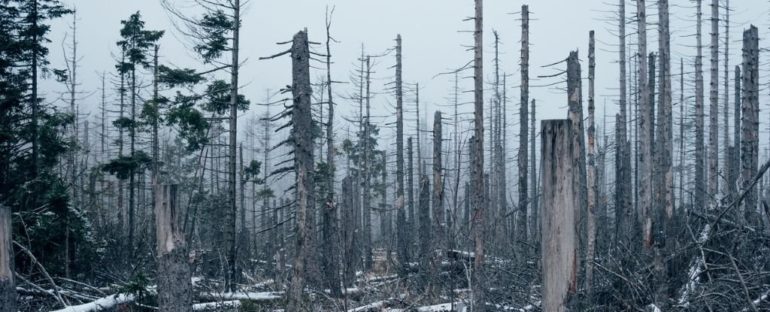As a tree grows and branches, we know it consumes and stores carbon from the atmosphere in its wood. But what happens when a tree dies?
Believe it or not, we still don’t really understand how the whole process unwinds.
Deadwood, which includes fallen trees, standing dead trees, trunks and fallen branches, is currently thought to contain roughly 8 percent of all the carbon already in the atmosphere.
However, the full picture of the role decomposing wood plays in the global carbon cycle has been difficult to estimate. A series of new experiments is the first to put a number on this important part of Earth’s carbon cycle, and it suggests insects are playing an invisible, yet major role.
Each year, on average, researchers estimate about 10.9 gigatons of carbon are released from decaying woody matter around the world. That’s equivalent to 115 percent of our annual fossil fuel emissions and a quarter of the carbon released from soils each year; however, it’s also a natural part of forest renewal, decay making up a crucial part of the forest life cycle.
More than 90 percent of those emissions come from disintegrating wood in the tropics, and nearly 30 percent is unleashed from the actions of decomposing insects.
“Until now, little has been known about the role of dead trees,” says ecologist and conservation biologist David Lindenmayer from The Australian National University (ANU).
“We know living trees play a vital role in observing carbon dioxide from the atmosphere. But up until now, we didn’t know what happens when those trees decompose. It turns out, it has a massive impact.”
Of course, not all the carbon released from deadwood goes straight into the atmosphere. Some becomes trapped in the soil or in creatures that use the wood for food or shelter.
A study earlier this year found standing dead trees might not be emitting as many greenhouse gases on their own as soil, and yet these trees can act like straws, sucking carbon or methane out of the ground and emitting it into the atmosphere.
The speed at which deadwood itself breaks down depends mainly on interactions between the local climate and the activity of decomposers, such as fungi, microorganisms, and insects.
Termites and wood-boring beetles, for instance, are known to gobble up some of the carbon in wood for themselves, confining it to the biosphere. Until now, however, we didn’t really know how much these insects played a role in the decomposing process.
When researchers conducted field experiments at 55 forest sites across 6 continents, they found insects do not always accelerate wood decomposition, as is often assumed. Instead, their role in the global carbon cycle seemed to heavily depend on the local climate.
Drawing on more than 140 tree species, the authors compared what happens to thousands of samples of deadwood over the course of three years when they are either placed in mesh cages to keep insects out, or when they are placed in the open forest where insects can easily get to them.
In regions where local temperatures were higher and more humid, researchers noticed the deadwood weathered and decomposed from the climate and insects much faster.
This suggests that climate change might increase wood decomposition in tropical or subtropical areas as temperatures rise, as long as moisture still exists. In dry areas, on the other hand, wood decomposition will likely slow, even if temperatures are high.
Without precipitation, woody material doesn’t break down nearly as easily, and without water, there are generally fewer insects around to accelerate the process.
Yet even when rainfall is plentiful, it doesn’t always speed up decomposition. In temperate and boreal forests further north, for instance, precipitation actually seemed to slow down decomposition, possibly because it can sometimes freeze the wood, but also probably because insects are less abundant further north.
In the end, researchers found boreal and temperate forests account for less than 7 percent of carbon released from deadwood each year.
The rest comes from the tropics, where the authors found temperature, precipitation and wood-boring insects together play a critical role in recycling dead trees.
“Insects accounted for 29 percent of deadwood carbon release each year,” says ecologist Marisa Stone from Griffith University.
“However, their role was disproportionately greater within the tropics and had little effect in regions of low temperatures.”
In recent years, scientists have begun to notice an ‘insect apocalypse’ occurring around the world, including in the tropics where most insect diversity resides. As we’re beginning to understand, this dramatic and sudden loss of decomposers has a potentially massive impact on deadwood and its carbon emissions.
Further research is needed to investigate the impact of climate change on insects, especially in the warm, humid tropics, where deadwood seems to play such an important role in the global carbon cycle.
“At a time of global change, we can see some dramatic declines in biodiversity and changes in climate,” says study first author and conservation biologist Sebastian Seibold from the Technical University of Munich in Germany
“This study has demonstrated that both climate change and the loss of insects have the potential to alter the decomposition of wood, and therefore, carbon and nutrient cycles worldwide.”
The study was published in Nature.



